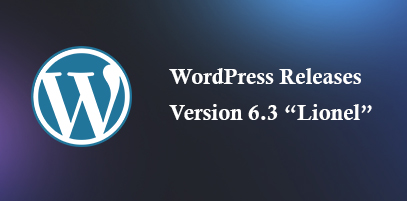OWASP Top 10
By :- Ilika - Web Guru Awards Team

The Open Net Application Security Project (OWASP) may be a non-profit foundation dedicated to the protection of software packages. OWASP operates below AN ‘open community’ model, wherever anyone will participate in and contribute to comes, events, online chats, and more. A guideline of OWASP is that each one material and data square measure free and simply accessed on their website, for everybody. In short, OWASP may be a repository of all things web-application-security, backed by the in-depth data and knowledge of its open community contributors.
What is the OWASP Top 10?
OWASP prime ten is an online document on OWASP’s website that has the ranking of and correction steerage for the highest ten most crucial web application security risks. The report is predicated on an agreement among security consultants from around the world. The risks square measure hierarchic and supported the frequency of discovered security defects, the severity of the vulnerabilities, and also the magnitude of their potential impacts. The report aims to supply developers and net application security professionals’ insight into the foremost rife security risks so that they'll incorporate the report’s findings and suggestions into their security practices, thereby minimizing the presence of those far-famed risks in their applications.
How will OWASP prime ten work and why is it important?
OWASP maintains the highest ten list and has done therefore since 2003. Each 2-3 years the list is updated by advancements and changes within the AppSec market. OWASP’s importance lies within the unjust info it provides; it is a key listing and internal net application development customary for several of the world’s largest organizations.
Auditors typically read an organization’s failure to handle the OWASP prime ten as a sign that it's going to be falling short with regard to compliance standards. Integration of the highest ten into its software package development life cycle (SDLC) demonstrates AN overall commitment to trade best practices for secure development.
OWASP top ten Vulnerabilities
So, what square measure the highest ten risks in step with OWASP? we tend to break down every item, its risk level, a way to take a look at for them, and the way to resolve every.
1. Injection
Injection happens once AN assaulter exploits insecure code to insert (or inject) their own code into a program. As a result of the program is unable to see code inserted during this method from its own code, attackers square measure able to use injection attacks to access secure areas and hint as if they're trustworthy users. Samples of injection embody SQL injections, command injections, CRLF injections, and LDAP injections. Application security testing will reveal injection flaws and recommend correction techniques like husking special characters from user input or writing parameterized SQL queries.
2. Broken Authentication
A broken authentication vulnerability will permit an assaulter to use manual and/or automatic ways to do to achieve management over any account they require in a very system – or maybe worse – to achieve complete management over the system. Websites with broken authentication vulnerabilities square measure quite common online. Broken authentication typically refers to logic problems that occur on the appliance authentication’s mechanism, like unhealthy session management at risk of username enumeration – once a malicious actor uses brute-force techniques to either guess or makes sure valid users in a very system.
3. Sensitive knowledge Exposure
Sensitive knowledge exposure is one of the foremost widespread vulnerabilities on the OWASP list. It consists of compromising knowledge that ought to be protected. any organization needs to know the importance of protecting users’ info and privacy. All firms ought to go with their native privacy laws. Accountable sensitive knowledge assortment and handling became a lot of noticeable particularly once the appearance of the final knowledge Protection Regulation (GDPR). This can be a replacement knowledge privacy law that came into impact might 2018. It mandates however firms collect, modify, process, store, and delete personal knowledge originating within the international organization for each resident and guest.
4. XML External Entities (XXE)
Attackers square measure able to profit of net applications that use vulnerable element process XML’s. Attackers square measure able to transfer XML or embody hostile commands or content inside an XML document.
Example: An application permits untrusted sources to perform XML uploads.
Solution: Static application security testing (SAST) is extremely useful at sleuthing XXE in ASCII text files. SAST helps examine each application configuration and dependencies.
5. Broken Access management
If authentication and access restriction don't seem to be properly enforced, it is simple for attackers to require no matter what they require. With broken access management flaws, unauthenticated or unauthorized users might have access to sensitive files and systems, or maybe user privilege settings. Configuration errors and insecure access management practices square measure exhausting to observe as automatic processes cannot perpetually take a look at for them. Penetration testing will observe missing authentication, however, different ways should be accustomed to confirm configuration issues. Weak access controls and problems with credentials management square measure preventable with secure committal to writing practices, further as preventative measures like protection down body accounts and controls and mistreatment multi-factor authentication.
6. Security Misconfiguration
Just like misconfigured access controls, a lot of general security configuration errors are vast risks that offer attackers fast, quick access to sensitive knowledge and website areas. Dynamic testing will assist you to discover misconfigured security in your application.
7. Cross-Site Scripting
With cross-site scripting, attackers benefit from Apis and DOM manipulation to retrieve knowledge from or send commands to your application. Cross-site scripting widens the attack surface for threat actors, sanction them to hijack user accounts, access browser histories, unfold Trojans and worms, manage browsers remotely, and more. coaching developers in best practices like knowledge cryptography and input validation reduces the chance of this risk. Sanitize your knowledge by verifying that it’s the content you expect for that individual field, and by cryptography, it is for the “endpoint” as an additional layer of protection.
8. Insecure Deserialization
Deserialization, or retrieving knowledge and objects that are written to disks or otherwise saved, may be accustomed to remotely execute code in your application or as a door to additional attacks. The format that the Associate in the Nursing object is serialized into is either structured or binary text through common serialization systems like JSON and XML. This flaw happens once an Associate in Nursing offender uses untrusted knowledge to control an Associate in the Nursing application, initiate a denial of service (DoS) attack, or execute unpredictable code to vary the behavior of the appliance. though deserialization is tough to use, penetration testing or the employment of application security tools will scale back the chance additional. in addition, don't settle for serialized objects from untrusted sources and don't use strategies that solely permit primitive knowledge varieties.
9. Mistreatment elements with legendary Vulnerabilities
No matter however secure your own code is, attackers will exploit Apis, dependencies, and different third-party elements if they're not themselves secure. Static analysis in the middle of a code composition analysis will find and facilitate neutralize insecure elements in your application. Veracode’s static code Associate in Nursingalysis tools will facilitate developers to realize such insecure elements in their code before they publish an application.
10. Low work and observation
Failing to log errors or attacks and poor observation practices will introduce a person's component to security risks. Threat actors judge an absence of observation and slower rectification times so that they will perform their attacks before you have got time to note or react.
To prevent problems with low work and observation, ensure that each login failure, access management failure, and server-side input validation failure are logged with the context so that you'll be able to establish suspicious activity. Penetration testing could be a good way to search out areas of your application with low work too. Establishing effective observation practices is additionally essential.
Recent Topics
-
 WordPress.com Launches 100-Year Web Hosting Plan
WordPress.com Launches 100-Year Web Hosting PlanWordPress, the platform that helps people create websites, now offers something rare. It has taken a bold leap into the future with its 100-year web hosting plan. ...
Read MoreBy :- Laura Davidson
-
 5 Best AI Web Design Tools You Can Try
5 Best AI Web Design Tools You Can TryWhy bother with all the effort of creating websites manually when we have amazing AI tools? In fact, using these tools has become one of the most-practiced ...
Read MoreBy :- Tiana K
-
 Role of Animation and Micro-Interactions in User Experience
Role of Animation and Micro-Interactions in User ExperienceIn today's world, almost every brand wants to create a user-friendly interface for its customers. The main aim behind this is to increase customer base and revenue. Now, when it comes...
Read MoreBy :- Laura Davidson
-
 Web Design Trends to Watch Out for in 2024
Web Design Trends to Watch Out for in 2024Web design is a constant-evolving technology landscape. As a web designer, staying tuned with web design trends and keeping your designs up-to-date is important. These trends will affect ...
Read MoreBy :- Esther McGuinness
-
 The Power of Storytelling in Web Design Engaging Users with a Narrative
The Power of Storytelling in Web Design Engaging Users with a NarrativeStories never fail to engage listeners. That’s why web designers are leveraging the art of storytelling in their designs. In web designing, storytelling goes beyond merely usin...
Read MoreBy :- Navkiran Dhaliwal
-
 WordPress Releases Version 6.3 ?“Lionel”
WordPress Releases Version 6.3 ?“Lionel”WordPress 6.3 “Lionel” is out! Now, you’ll be able to create more beautiful and compelling websi...
Read MoreBy :- Tiana K
